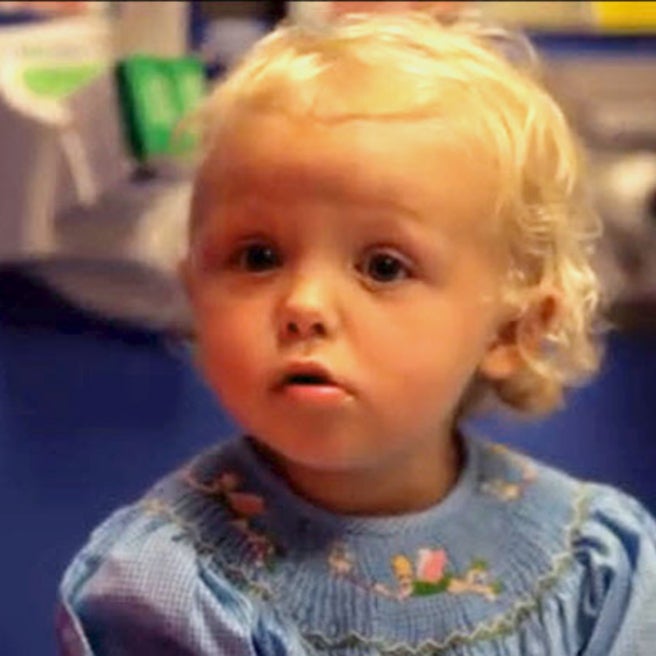What is hereditary neuroblastoma (NBL)?
Neuroblastoma (NBL) is a cancer of developing nerve cells that mainly affects infants and young children. The disease shows a wide range of clinical behaviors, with some tumors shrinking on their own, while others demonstrate a more aggressive course. NBL tumors may originate in the:
- Adrenal glands (small hormone producing organs located on top of each kidney)
- Nerve tissues symmetrically distributed on either side of the spine from the base of the skull to the pelvis
Most cases of neuroblastoma (NBL) occur sporadically, affecting individuals who have no family history of the disease. However, in 1-2 percent of cases, a susceptibility to develop neuroblastoma can be inherited from a parent. Children with familial neuroblastoma have a higher incidence of multiple primary tumors and are diagnosed at a younger age, than their counterparts with the sporadic form of the disease.
The risk of developing the features associated with hereditary neuroblastoma may be passed from generation to generation in a family, but the severity of disease can vary widely between family members.
Causes
A predisposition to hereditary neuroblastoma is caused by alterations, also known as mutations, at specific areas within an individual’s genetic information. Each of us has a large amount of genetic information that is organized into smaller segments known as “genes.” Genes provide the necessary instructions that our cells require to perform their different functions within our bodies.
There are two genes that are often altered in patients with familial neuroblastoma:
- Anaplastic lymphoma kinase (ALK) gene, located on chromosome 2 at position p23
- Paired-like homeobox 2b (PHOX2B) gene, located on chromosome 4 at position p12
Most hereditary neuroblastomas are caused by alterations in the ALK gene. PHOX2B-related neuroblastomas are far less common, and typically occur in patients with other disorders of neural crest development such as:
- Hirschsprung's disease — a condition affecting the large intestine (colon) where nerves are missing from a part of the colon resulting in bowel obstructions or difficulty passing stool
- Decreased esophageal motility — transfer of food from the mouth to the stomach is disrupted or not as efficient as it should be
- Congenital central hypoventilation syndrome (CCHS) — a disorder of the central nervous system where, most dramatically, the automatic control of breathing is absent or impaired
Both the ALK and PHOX2B genes produce proteins that are critical for normal nervous system development.
With the exception of egg and sperm cells, each cell of the body normally has two working copies of both the ALK and PHOX2B genes. However, in some patients with hereditary neuroblastoma, each cell contains only one working copy of either of these genes. While the second copy is present, it is altered so that it does not function properly. ALK and PHOX2B mutations are believed to contribute to the development of neuroblastoma by increasing the proliferation of neural cells, which makes them more likely to become cancerous.
How is hereditary neuroblastoma inherited?
Some individuals with hereditary neuroblastoma inherit an altered copy of either ALK or PHOX2B from a parent who carries the same genetic mutation. In the remaining patients, the susceptibility to develop neuroblastoma results from the development of a “new” mutation in one of the father’s sperm, mother’s eggs, or in a cell of the developing fetus. In the latter scenario, the affected child will be the first person in their family to carry this genetic change.
People who carry an alteration in one copy of either ALK or PHOX2B in all the cells of their body have a 50 percent — or one in two chance — of passing this same alteration on to each of their children. Children who inherit the altered gene copy have an increased risk of developing neuroblastoma, or in the case of PHOX2B, the additional features associated with congenital central hypoventilation syndrome (CCHS), such as Hirschsprung's disease and difficulty swallowing.
Sometimes, it is difficult to tell whether a predisposition to hereditary neuroblastoma was inherited from a parent. This is because some individuals with ALK or PHOX2B mutations never develop neuroblastoma. Although the basis for this phenomenon is not understood, it is believed that while mutations in ALK or PHOX2B can cause abnormal cell proliferation, additional genetic alteration(s) are necessary for a tumor to form. Individuals who carry an ALK or PHOX2B gene mutation but never acquire these other genetic alterations may be less likely to develop neuroblastoma.
Diagnosis
A detailed review of your child's medical and family history becomes important in diagnosing hereditary neuroblastoma. A doctor or genetic counselor may construct a family tree spanning many generations that indicates whether other family members have developed neuroblastoma or other disorders of neural crest cell development. If the pattern of clinical features suggests hereditary neuroblastoma, the physician or counselor may recommend genetic testing. Genetic testing will confirm whether your child has hereditary neuroblastoma.
- Generally, a sample of blood is obtained from an affected individual.
- DNA is isolated from this sample, and the two copies of both the ALK and PHOX2B genes are analyzed.
- If an alteration in either ALK or PHOX2B is identified, the genetic counselor can examine whether the alteration has been previously reported in other individuals with hereditary neuroblastoma.
Hereditary neuroblastoma genetic test results can also provide important information for other family members. If a mutation responsible for neuroblastoma is identified in the affected child, at-risk relatives can be tested for the same genetic alteration.
Reproductive options
A person with hereditary neuroblastoma who does not wish to pass this disease onto future children has several options, including:
- Prenatal diagnosis: DNA is obtained from the cells of the embryo through chorionic villus sampling or amniocentesis. The DNA is analyzed for alterations in the ALK or PHOX2B gene.
- Preimplantation genetic diagnosis (PGD): For couples using in vitro fertilization to become pregnant, embryos can be tested for genetic disorders before transferring them into the uterus. Only healthy embryos carrying two working copies of the ALK and PHOX2B genes would be implanted.
Before one can proceed with prenatal testing or PGD, an ALK or PHOX2B mutation must be identified in a parent with familial neuroblastoma. Using either method, a parent can work with a genetic counselor and/or physician to decide whether to carry the pregnancy to term or to end the pregnancy.
Cancer risk
Individuals with an altered ALK or PHOX2B gene are at increased risk to develop neuroblastoma. The risk of tumor formation is highest in infancy, and decreases by late childhood. Currently, it is believed that approximately 50-60 percent of individuals with an ALK alteration will develop neuroblastoma. While a neuroblastoma can range from low-risk to high-risk, there is no way to predict how the disease will manifest in individuals with an ALK alteration.
There is no published information about cancer risks in adults who carry an ALK or PHOX2B mutation. However, carrier adults who never had neuroblastoma may still be at increased risk to develop tumors later in life, as is the case with other familial cancer syndromes.
Recommended cancer screening for children with altered ALK or PHOX2B
At this time, there are no established guidelines for cancer screening in children with an ALK or PHOX2B mutation, but the following methods are generally recommended:
- Abdominal ultrasounds and measurement of urine catecholamine metabolite levels every 1-2 months in infants up to 1 year of age.
- Abdominal ultrasounds and measurement of urine catecholamine metabolite levels every 3-4 months in children aged 1 to 10.
- For children with abnormal ultrasound results and/or urine catecholamine levels, additional radiologic testing is recommended.
Resources to help
Hereditary Neuroblastoma Resources
Cancer Predisposition Program Resources
We have gathered resources to give you information about cancer predisposition and help you find answers to your questions.
Reviewed by Kristin Zelley, MS, LCGC

